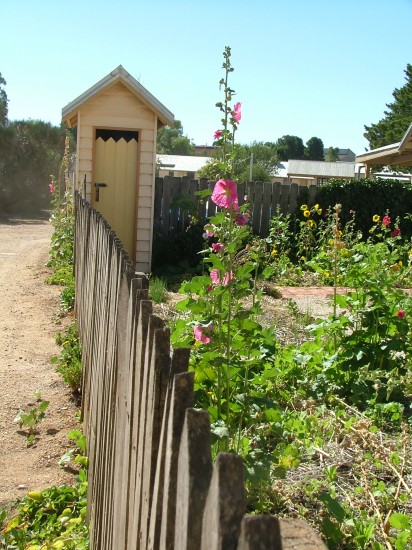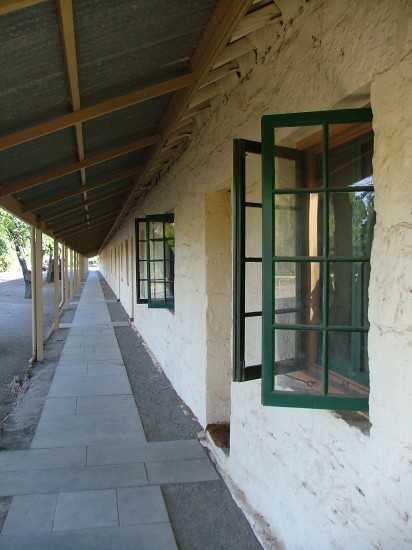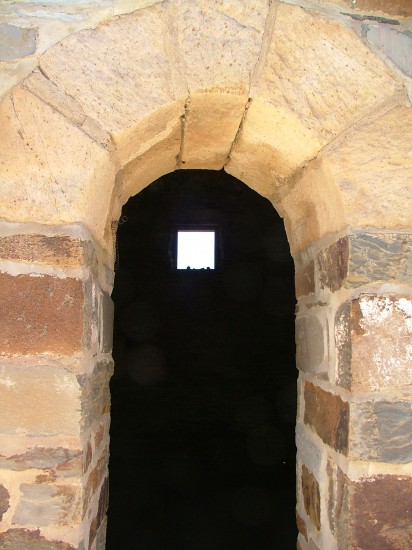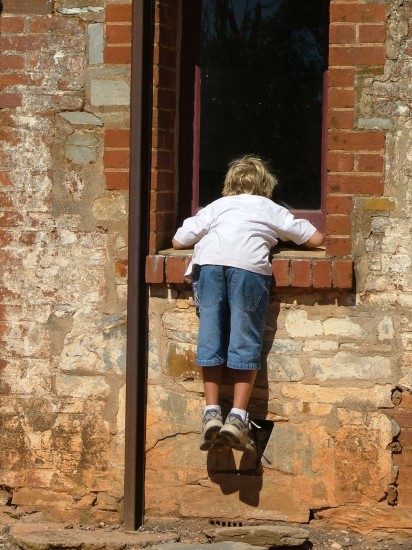The town of Burra in South Australia has everything a traveller could want: an historic gaol, cemetery and colonial cottages, but where’s the beer?
Burra, in South Australia’s Mid North, has more than its fair share of colonial history. It also offers certain attractions for the living. It’s old, comfortable and interesting.
Taking in the knickknack stores and antique shops around Market Square easily fills in a relaxed Saturday morning, browsing amongst everything from old books and fishing gear to replica guns and model cars to genuine antique furniture and old wares.
If you smoke, don’t ask a local for a light.
We had a look at Tivers Row Cottages. You know, family history and all that.
The six cottages, constructed in 1856 by James and Emma Tiver, are good examples of sound, functional, colonial Cornish architecture. Inside they’re pretty flash. Pity cousin James didn’t remember us in his will. We dropped his name but it didn’t mean much to the new owners.
Today, the B&B cottages are more for the toffs than blue-collar riff-raff.
The winner of two regional tourism awards as well as the 1995 St George Bank/National Trust Conservation Award, the cottages have open fires, bathrooms with underfloor heating and beds fitted with Sheridan linen.
Breakfast can be taken in a private cottage garden, looking down the nose and out over the hills to historic Redruth Gaol. Built in 1856, the former prison and girl’s reformatory was used as a set for the making of the hit 1979 Australian film, Breaker Morant.
Down the road is Paxton Square Cottages, built between 1849 and 1852 by the mining association as alternative housing for copper miners who lived like yabbies (freshwater crayfish) in dugout hole homes along the riverbank.
The Cornish stonemasons who built one of Australia’s first housing estates, set around a square once filled with vegetable gardens and home to 160 people, must have lived in fear of nuclear attack.
Better than bunkers and already more than 150 years old, with stone walls more than 40cm thick, these cottages aren’t going anywhere.
Australian historian Geoffrey Blainey reckoned Paxton Square was worth preserving.
He wrote: “Of the relics of Australia’s first great mining era, these cottages are perhaps more deserving of preservation than any other surviving objects in any part of Australia.”
Burra is an easy town to get around and the 11-km-long Burra Heritage Trail, a 43-stop self-guided tour with key access to seven historic sites, maintained by the National Trust of South Australia, is the best way to do it.
The tour starts at the Town Hall on Thames Street, built in 1874, and continues past the Kooringa Telegraph Station and Post Office, a square, utilitarian Victorian building, from where feisty Scottish explorer and sometimes staggering drunk John McDouall Stuart telegraphed back to Adelaide in January, 1863, that he and his exploratory party had successfully crossed the continent from south to north in a 15-month, 3000km trek from Adelaide to the Gulf of Carpentaria.
In the space of a few hours, the tour takes in the entire Burra township and Monster Mine site. There is key access to the Powder Magazine above Morphett’s Enginehouse Museum, originally lined with sheepskin to prevent a spark induced explosions.
There’s also a visit to the Bon Accord Mine complex, a whistlestop at the blacksmith, grocery and butcher’s shops, the Royal Exchange Hotel, the Burra Railway Station – now a roost for social-climbing pigeons — and on to the Police Lock-up and Stables on Ludgvan St, built in 1847.
The ghosts of its former inmates must be peeved to know that today’s visitors have key access and can freely walk in and out of the cold, narrow cells set behind the stone walls of the stable yards.
There’s also key access to Redruth Gaol, where visitors can stroll around the exercise yard and peer through the barred windows that formerly reflected faces of despair; and to the former cellars of the Unicorn Brewery, built in 1873 to brew beer for the town’s nine hotels.
The cool, damp warren of cellars with connecting tunnels, vaulted ceilings and stone arches, is extensive, a labyrinth of shadows and dappled lighting. It’s a highlight of the tour.
Only one complaint. There’s no beer.
If You are Burra Bound…
Where: 156km north of Adelaide on the Barrier Highway to Broken Hill, New South Wales.
When: Pretty well anytime. In winter, large open fireplaces help make the miner’s cottages warm and inviting; in summer their thick, cool stone walls are surprisingly efficient at keeping out the heat.
Why: Because everybody should wander through a cemetery at night at least once in their life. Being amongst all those dead people makes one feel very much alive.
Watch out for: Locals asking for a light for their clay pipe.
Contact: For more information, contact the Burra Visitor Centre, phone (08) 8892 2154, email burravisitorcentre@bigpond.com or hit the website www.visitburra.com.
Read more tales from Burra by Vincent Ross on Life As A Human.







Please Share Your Thoughts - Leave A Comment!